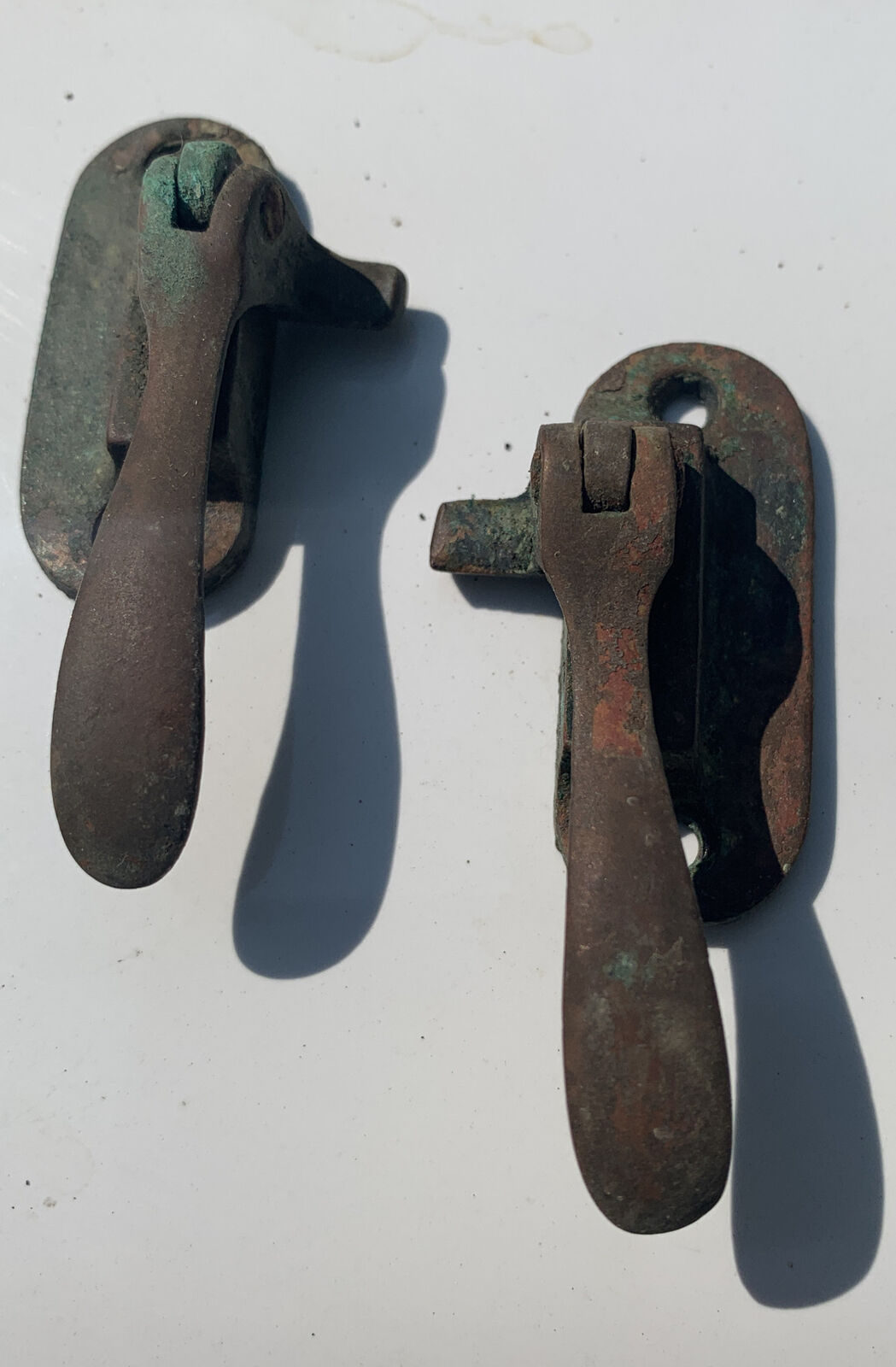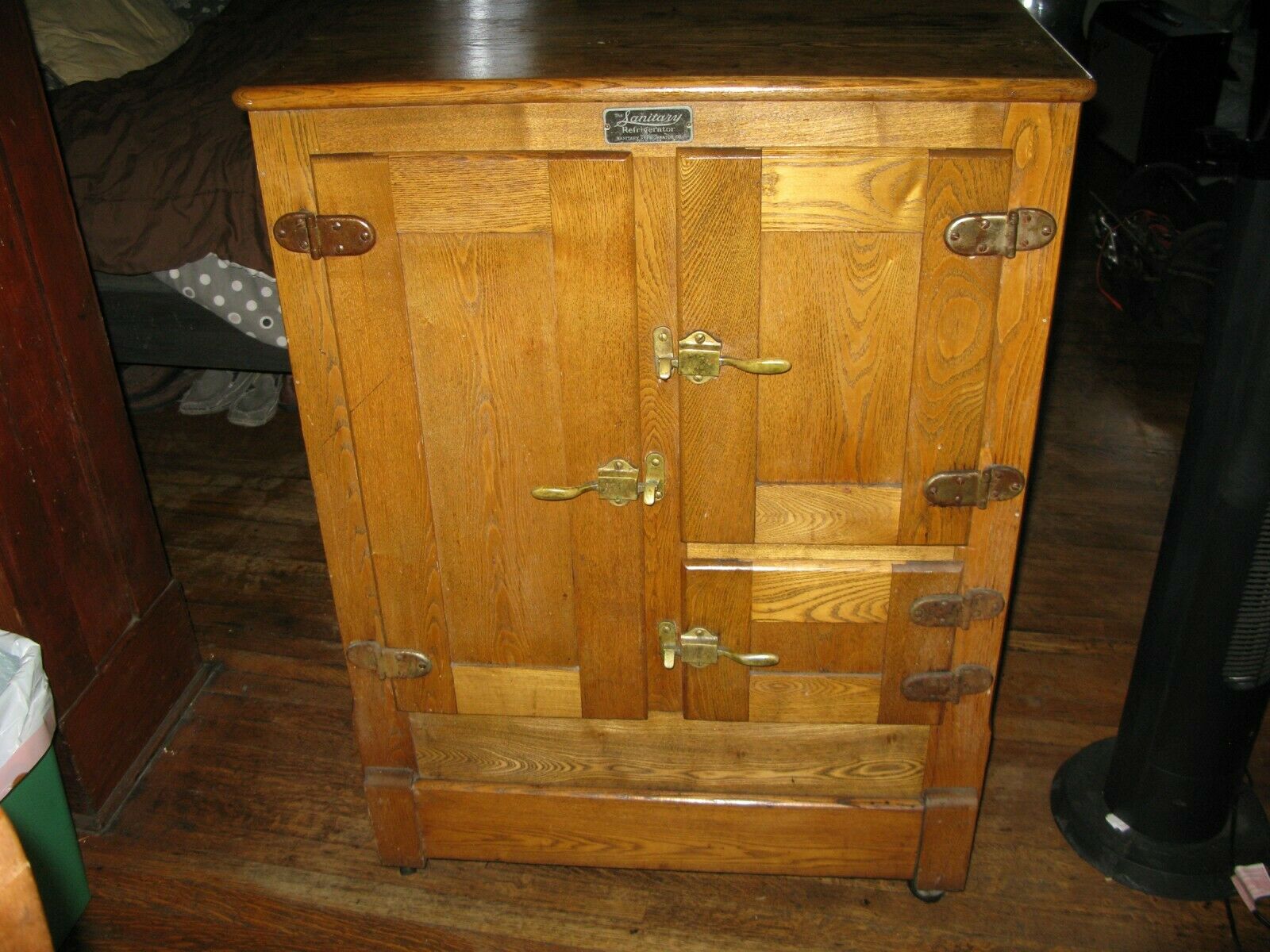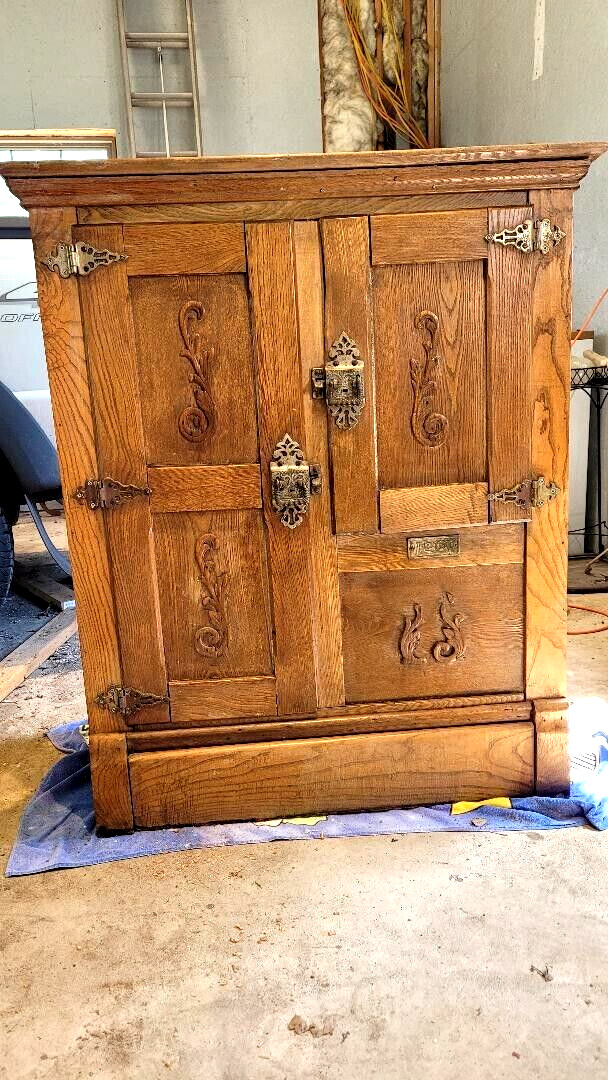-40%
'Antique original oak wood icebox chest Refrigerator 31"x16"x36
$ 349
- Description
- Size Guide
Description
'Antique original oak wood icebox chest Refrigerator 31"x16"x36."Condition is "Seller refurbished".
Antique original Medium size oak wood icebox Refrigerator
Local pickup only
Antique original oak wood icebox chest.. This icebox chest Refrigerator measures 31″ wide by 16″ deep and 36″ height. The three-door Antique oak wood icebox has 2 wire shelving and the original door hinges and latches it ready for you to enjoy in your home. This Antique oak wood icebox cooler was manufacture from about 1889 up to about 1940 and a lot a people used it well into the 50s. You buy a block of ice 12" x 16"x16 and you will put the blocks of ice in a left top door every day you put another block of ice into it. It word stop your milk or spoiling and keep your meat from going bad for a longer period of time. This icebox used to belong to my grandma. I don't know how many years she had it. I am 70 years old and she had it many years before I was born. There were several things I thought about doing with the icebox and the number one thing was to rework it and then put a small cooler unit inside of it to put my beer and soda inside it. It is kind of funny with time everything changes. I am 70 years old and I don't need a trinket like that anymore.
Antique original oak wood icebox Refrigerator. This icebox chest Refrigerator measures 31″ wide by 16″ deep and 36″ height. The three-door Antique oak wood icebox has 2 wire shelving and the original door hinges and latches it ready for you to enjoy in your home. This Antique oak wood icebox cooler was manufacture from about 1889 up to about 1940 and a lot a people used it well into the 50s. You buy a block of ice 12" x 16"x16 and you will put the blocks of ice in a left top door every day you put another block of ice into it. It word stop your milk or spoiling and keep your meat from going bad for a longer period of time. This icebox used to belong to my grandma. I don't know how many years she had it. I am 70 years old and she had it many years before I was born. There were several things I thought about doing with the icebox and the number one thing was to rework it and then put a small cooler unit inside of it to put my beer and soda inside it. It is kind of funny with time everything changes. I am 70 years old and I don't need a trinket like that anymore.
History of the Oakwood ice box
The icebox was invented by an American farmer and cabinetmaker named Thomas Moore in 1802.[11] Moore used the icebox to transport butter from his home to the Georgetown markets, which allowed him to sell firm, brick butter instead of soft, melted tubs like his fellow vendors at the time. His first design consisted of an oval cedar tub with a tin container fitted inside with ice between them, all wrapped in rabbit fur to insulate the device.[11] Later versions would include hollow walls that were lined with tin or zinc and packed with various insulating materials such as cork, sawdust, straw or seaweed.[12] A large block of ice is held in a tray or compartment near the top of the box. Cold air circulates down and around storage compartments in the lower section. Some finer models have spigots for draining ice water from a catch pan or holding tank. In cheaper models, a drip pan is placed under the box and has to be emptied at least daily. The user has to replenish the melted ice, normally by obtaining new ice from an iceman. The design of the icebox allowed perishable foods to be stored longer than before and without the need for lengthier preservation processes such as smoking, drying, or canning.[13] Refrigerating perishables also had the added benefit of not altering the taste of what it is preserving.













